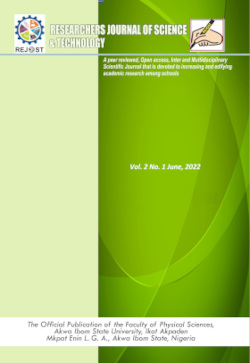Intelligent Surveillance and Facial Recognition System for Efficient Border Monitoring and Threats Prediction Using Machine Learning Approach
Keywords:
Intelligent Border Surveillance System(IBSS), Machine Learning (ML), Thermal Imaging (TI) camera, Principal Component Analysis (PCA), Viola Jones AlgorithmAbstract
Border authenticate an integral portion in a country's security, but borders are extremely prone and vulnerable to unauthorized migration, illegal smuggling of goods and drugs, human trafficking and assaults by the extremists as well as intrusion and cohesion between several parties. Border surveillance is the most central task in the area of national security and defense. Basically, borders need to be secured and kept under close monitoring and control for effective surveillance at different border points, which are stretched across hundreds of miles and have extreme terrain as well as climatic conditions. Hence, the need of the moment is to develop an automated border surveillance system which can perform the surveillance task without requiring any human intervention. The proposed system uses Internet Protocol (IP) camera or thermal imaging (TI) camera for detection of various objects and infiltrators. The Camera is assigned an IP address and connected through local network to the control center. Software code captures video and subsequently the intrusion detection. Machine Learning (ML) approach with Principal Component Analysis (PCA) and Viola Jones Algorithm was adopted for the intelligence recognition and facial detection of persons from list of images captured based on the surveillance IP camera. Consequently, the data sets were segmented into training set and test set of 300 images and 100 images respectively. Furthermore, we subjected our PCA model to an accuracy test and selected out different individual faces. These faces were all tested with our face recognition system and data was further computed in confusion matrix for performance evaluation and system accuracy. The confusion matrix demonstrated an overall accuracy of 83%, which indicates a good outcome of the Viola Jones Algorithm in our intelligent border surveillance system (IBSS).
References
Adeyinka, A. M. (2014). Trans-Border Movement and Trading Activites across Nigeria– Benin Republic Border. Mediterranean Journal of Social Sciences, 5(1), 415.
Alkhathami, M., Alazzawi, L. and Elkateeb, A., 2015. Border surveillance and intrusion detection using wireless sensor
networks. International Journal of Advances in Engineering & Technology, Vol. 8, Issue 2, pp. 17-29, USA.
Ayush Goyal, Shreedevi Bugudanahalli Anandamurthy, Pritam Dash, Swati Acharya, Disha Bathla, David Hicks,
Anupama Bhan, Priya Ranjan(2020). Automatic Border Surveillance Using Machine Learning in Remote Video
Surveillance Systems, Publisher: Springer Singapore.
Babatunde O, Alao, D, Eyitayo A.(2019). Border Security Issues and Challenges of the Nigeria Customs Service,
International Journal of Latest Research in Humanities and Social Science,Volume 02 - Issue 03.
Collins D (2015). ‘The Clandestine movement of Groundnuts across the Niger-Nigeria boundary’. The Canadian
Journal of African Studies, vol10, no2, pp.259-276, Ekit, Nigeria.
Chi, L, Hongxin Z, and Mingxiu C. (2017). End-to-End Face Detection and Recognition, arXiv:1703.10818
Homeland Security (2018). "Border Security". Department of Homeland Security. Retrieved 2021-07-31.
Umoren, I. J. and Inyang, S. J. (2021). Methodical Performance Modelling of Mobile Broadband Networks with Soft Computing Model. International Journal of Computer Applications 174(25):7-21, NY, USA.
Manjarrez, Jr. V.M. (2015). “Border Security: Defining it is the Real Challenge.” Journal of Homeland Security and Emergency Management 12(4): 793-800, El Paso, TX 79968, USA.
Musalli N, Azhar H, Ruslan Z, (2015). Performance of Border Management Personnel and Its Security Implications in
Northern Nigerian Borders: A Pilot Study for Reliability and Validity of Instruments, Vol.5, No.4, Utara Malaysia.
Matthias Leese, Simon Noori & Stephan Scheel (2021) Data Matters: The Politics and Practices of Digital Border and
Migration Management, Geopolitics, DOI: 10.1080/14650045.2021.1940538.
O’Dowd L., (2002). ‘The changing significance of European borders’, in J Anderson, L O’Dowd & T Wilson (eds),
New borders for a changing Europe: cross-border cooperation and governance, Frank Cass, London.
Lehtonen P. and and Aalto P. (2017) Smart and secure borders through automated border control systems in the EU?
The views of political stakeholders in the Member States, European Security, 26:2, 207-225, DOI: 10.1080/09662839.2016.-1276057
Turk M. A. and Pentland A.P,(1991). “Face Recognition Using Eigenfaces”, IEEE Conf. on Computer Vision and Pattern
Recognition, pp. 586-591.
Umoren I., Okpongkpong, E., & Udoeka, I. (2022). A Fuzzy Knowledge-Based Approach for End-2-End Behavioural
Analysis of Wormhole Attacks on Mobile Ad-Hoc Networks. International Journal of Information Systems and Informatics, 2(4). https://doi.org/10.47747/ijisi.v2i4.581.
William L Allen and Bastian A Vollmer(2018). “Clean Skins: Making the e-Border Security Assemblage,”
Environment and Planning D: Society and Space 36, no. 1 (February 2018): 28, https://doi.org/10.1177/026377581772256
Yukesh Upreti (2021). Issues in Border Security of Nepal, Journal of APF Command and Staff College 4:1, 152-160.

Downloads
Published
How to Cite
Issue
Section
Categories
License

This work is licensed under a Creative Commons Attribution-NonCommercial-NoDerivatives 4.0 International License.




